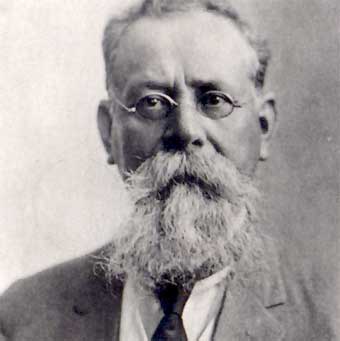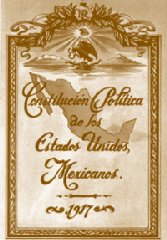We open our agendas and the calendar states it is “Constitution Day – February 5th.”*
It doesn’t appear to be anything grand, there are no huge parties or colorful parades; it is a day off and therefore there are no schools or work, lending a relaxed air to the weekend. Even so, it is a very important key date in the national, civic, and historic life of Mexico.
This is the document, also called the “Carta Magna”, that governs in one manner or another the life and work of Mexicans, and those who wrote it throughout history sought a nation of peace, justice, and progress.
This year celebrates the 96th anniversary of the proclamation of the Political Constitution that now governs our Mexico (Though its content has been reformed nearly 200 times and is quite different from the 1917 original, the Constitution formally continues to be the same). This indicates the triumphs of the vertiginous Revolution begun in 1910, as within its articles may be found elimination of the reelection of the President of the Republic as well as the role of Vice President, thereby cutting any possibility of dictatorships such as that of Porfirio Diaz.
Yet, this was not the first intent to establish order in the nation. Mexico, as an autonomous country and in its search to become a nation, wrote its first Constitution in 1824, three years following the end of the War for Independence and some years before Spain would formally recognize it (1836). The second was created in 1857 when Benito Juárez was President and was also published on February 5th. That Constitution, of a liberal character, would establish the individual guarantees of Mexican citizens, the freedom of expression, the freedom of assembly, and the freedom to bear arms. It reaffirmed the abolition of slavery, eliminated prison for civil debts and forms of torture as punishment, including the death penalty; it also prohibited titles of nobility, hereditary honors and monopolies. Yet it had problems in being accepted by conservatives and by the Church, against which it had various and severe effects thereby polarizing the Mexican population. It was not until 1867 when, with the Republic restored, did this constitution enter into effect throughout the country.
Nevertheless, it was in 1917 when the Mexican constitution evolved, refining itself nearly parallel to the Revolution that achieved its own reform. Both sought to repair the harm caused to society, while also creating an atmosphere of hope, union and identity among Mexicans.

With Venustiano Carranza and Álvaro Obregón leading the country, Articles 3, 27, and 123 were modified, which are the social spirit of this Constitution. Article 3 talks to secular State instructed education. This also establishes the freedom of worship. Article 27 establishes the foundation for agrarian reform, and Article 123 addresses work days, the minimum wage, labor protection for women and minors, participation of workers to profits, the right of association and the right to strike, among others.
This gave the excluded Mexican public certain security and protection, as well as dignity and acknowledgment, having them form part and participate in the reconstruction of Mexico.
It is worth noting that this Constitution is quite vanguard as it was the first Constitution in history that included social rights within its content (two years prior to the Weimar Constitution in 1919).
Curiously, on the religious side, the same date (Feb. 5th) honors the Mexican martyr San Felipe de Jesús who died in Japan at 24 years of age, and was canonized on June 8, 1862. More than anything, in the municipality of San Felipe, Veracruz, in honor of the patron saint, there are grand celebrations including a large fair, dance, rodeo, and sale of artisan crafts, among other things drawing a large crowd of people.
It would seem as if due to different forms of suffering (and secularization), the Church and State fight over this date. Even so, little by little both are defining the plurality and multicolors of Mexico in its acts, customs, and history.

